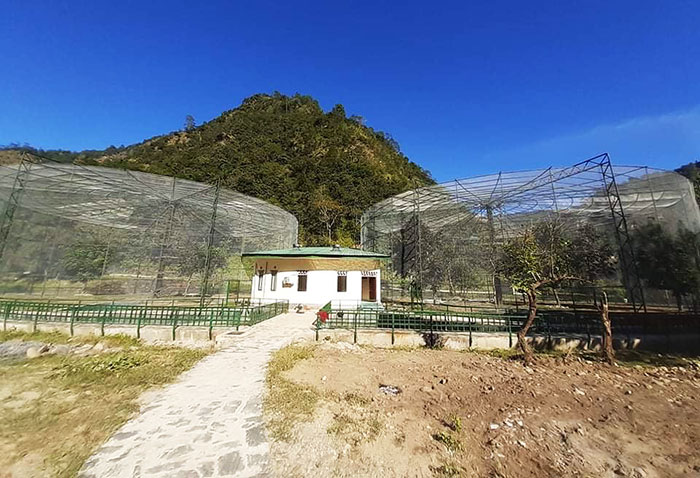Chimi Dema | Tsirang
Rapid developmental activities along the rivers, extensive habitat fragmentation due to degradation and disturbance of forests and wetlands, wildfire, and unsustainable fishing activities are some of the factors that hinder the proliferation of White-Bellied Heron (WBH) in the country.
These challenges and threats to the survival of the endangered WBH, though, can now be addressed with the completion of a captive breeding centre in Changchey, Tsirang.
The Royal Society for Protection of Nature (RSPN) has constructed the breeding centre with financial support from Punatsangchhu Hydropower Project Authority (PHPA) to conserve the habitat of White- Bellied-Heron (WBH) and to increase the species number.
Built on more than 18-acre land, the construction of the centre cost over Nu 48 million. The PHPA handed over the centre to RSPN on November 27.
The chief of research with the RSPN, Indra Acharja, said that it would however take some time to initiate breeding and research activities.
“The centre needs to be equipped with an incubator, laboratory, aviaries and feeding habitat to rear chicks,” he said. “In the meantime, we would continue with installing internal infrastructures but we will be able to initiate operation only after having expertise.”
“If possible, we would try breeding a few individuals in the coming breeding season,” he said.
The breeding season of the species begins from February and lasts until July.
“Should we encounter injured herons like in the past, they will be rescued and kept in the centre,” Indra Acharja said.
The primary objective of captive breeding is to establish an insurance population against the extinction of the species once the individuals are reintroduced into the wild.
The centre would secure and preserve a gene pool, and breed and release the birds back in the wild.
It is also aimed at understanding key information about the behaviour and biology of the bird since little is known today.
One of the key actions planned is to tag young herons with satellite tracking devices before reintroducing into the wild to better understand their dispersal and threats.
Besides helping to increase the number of WBH, the centre would also serve as a hub for emerging research, education and advocacy.
The ambitious project was taken up after RSPN attempted captive breeding and successfully hatched a chick.
Bhutan is the first country in the world to establish captive breeding of the WBH.
This year, Bhutan recorded 27 WBH in 15 of the 41 priority zones, an increase by two individuals from the previous year. This takes the country’s bird population to 45 percent of WBH global population, which is estimated at 60.


